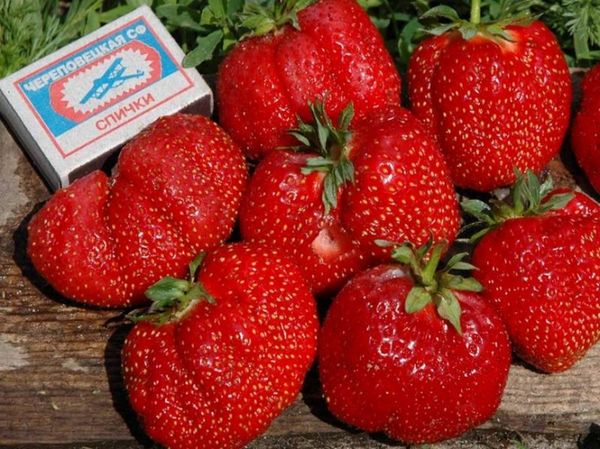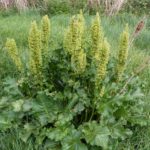Perhaps the most favorite berry gardeners is strawberry. At each personal plot there is at least one bed of sweet juicy berries. Every strawberry lover has his own favorite variety. Many prefer Gigantelle Maxim, bred by Dutch breeders.
Table of contents
Description and characteristics of the variety Gigantella Maxim
Berries of the first harvest of this variety, justifying its name, reach in 9 cm in diameter and 100 g in weight, subsequent - 40-60 g. Juicy, dense, sweet even in the rainy season, with sourness and light pineapple aroma.
The yield from one bush is 1 kg, and with good care - even more. Fruits from late May to early June in the southern regions and in early July in central Russia. Great for freezing, making jam, jam. Fruits tolerate transportation.
Winter hardiness according to the description is average, therefore strawberries are fed with manure for the winter, covered with foil, and the whiskers are covered with earth. It can grow in the suburbs and even in central Russia, where not many varieties of strawberries survive. In winter, the old leaves are not removed, they will be a natural delay in the snow.
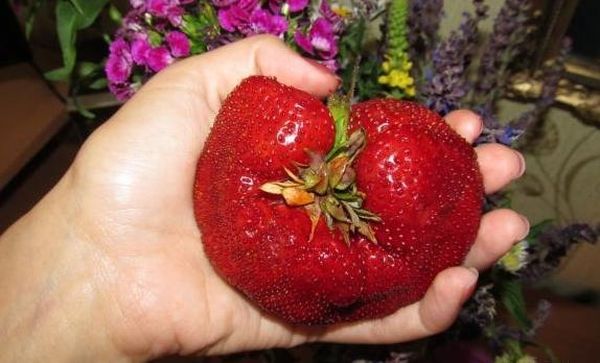
The variety is suitable for growing in greenhouses, in the open field is prone to over-pollination.
Advantages and disadvantages
The advantages of the variety Gigantella Maxim are:
- good taste;
- large and regular forms of berries;
- winter hardiness;
- disease resistance and pests;
- transportability;
- berries are well stored;
- remontrance.
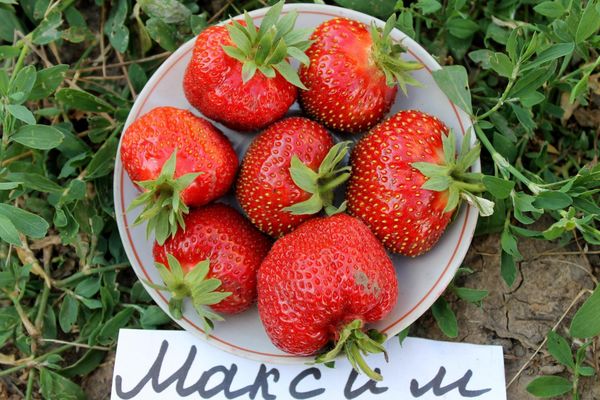
Some gardeners consider the shortcomings of the variety to be the middle term for ripening berries, increased care requirements (without sufficient watering and good lighting, the quality of the berries and the yield deteriorate).
Strawberry care
In order to get large, sweet, juicy fruits, it is necessary to provide the plant with good care, timely watering and fertilizing. Otherwise, the harvest is unlikely to please.
Breeding
Gigantella can be propagated in several ways:
- whiskers (the most common way);
- division of the bush;
- seeds.
For reproduction, strong and best-fruited bushes of one to two years of age with large berries are noted.
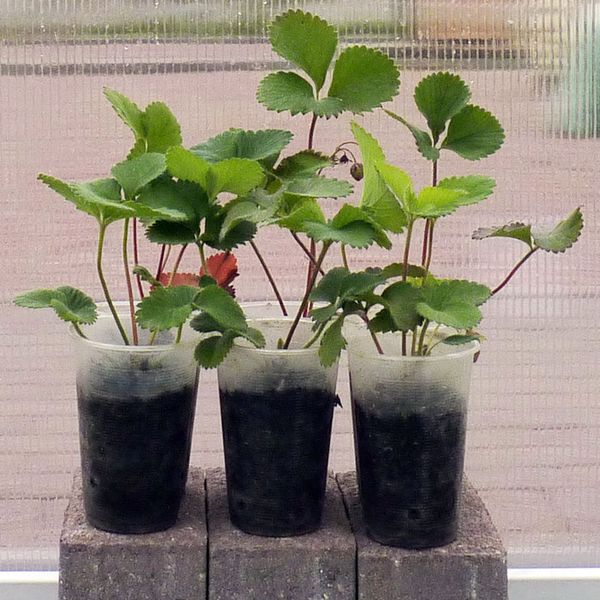
Two types of strawberry breeding are practiced:
- In the first year of the mustache do not cut off, give young bushes to winter, and transplanted in the spring to the prepared site.
- Young sockets cut off the maternal bush, grow in the greenhouse and put on a bed before the cold.
You can plant seedlings throughout the growing season - from early spring to late autumn. The latest planting date is half a month before frosts.
It is better to plant strawberries on time:
in the autumn
-
- - the second half of August - the middle of September;
in the spring
- - when no frost is expected. The temperature should not fall below 15 degrees.
Transplantation should be carried out in cloudy weather.
Landing
Gigantella bushes are notable for their impressive size: height - 35-50 cm, diameter - 60 cmtherefore, 4 bushes are planted per square meter.
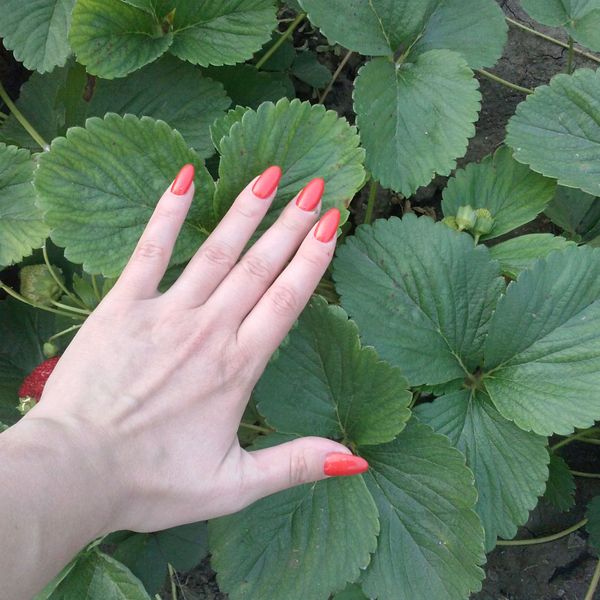
The plant feels better on light loamy soils with neutral acidity. It is advisable to plant on rested soil or where the legumes grew. For planting choose a well-lit sunny, protected from the wind area, say a small slope.
The depth of groundwater is not less than 0.8-1 m. When grown in a greenhouse, you need to take care of additional lighting so that the berries turn out to be sweet.In the hot summer in bright sun bushes need pritenyat.
Fertilizers are applied to 1 square meter of bed:
- manure - 3-4 kg;
- superphosphate - 20-30 g;
- potassium chloride - 7 g
If the soil is acidic, it is lime. But to make lime materials and fresh manure at the same time it is impossible. Organics are introduced in the autumn, and hydrated lime, chalk, dolomite flour or vegetable ash - in the spring, and vice versa.
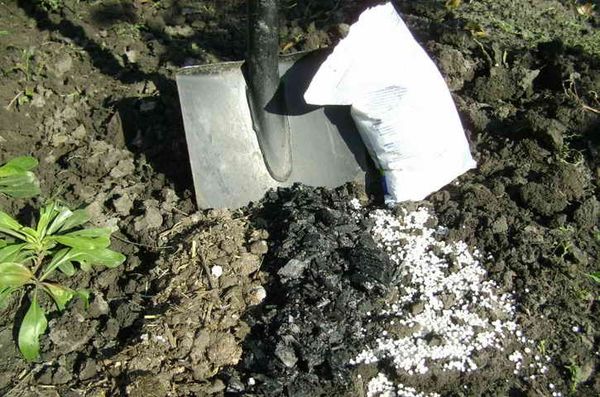
Gigantella has a feature: if you cut the leaves, it does not give flower stalks. Therefore, last year's foliage is removed during the formation of berries, in order to improve illumination and give access to the air.
Watering
Watering requires abundant and regular warm settled water. Once a week. When watering avoid getting water on the leaves, flowers and berries.
The best option is a drip irrigation device. To retain moisture in the soil, the land in the garden mulch. Sawdust also helps protect the fruit from slugs.
Feedings
1st year of fruiting - Gigantella bushes are not fed with nitrogen, otherwise the growth of leaves will begin, and the fruits will be affected by rot. Feed up potash and phosphate fertilizers in early spring. Complex fertilizers are excellent substitutes for slurry.
2nd year - fertilize with ammonium nitrate: 100 g per 10 sq. M. m
3rd year - in equal parts take potassium chloride, superphosphate and ammonium nitrate. Fertilize in early spring and after harvest.
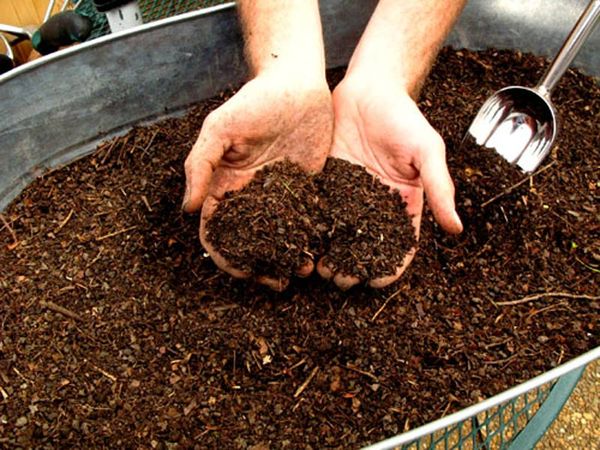
The introduction of rotted compost 1 bucket per square meter helps to create a favorable agricultural background.
Diseases and pests
Variety is considered persistent to diseases and pests, especially to gray rot and strawberry mite. However, the berries are large, ripen for a long time, therefore they are susceptible to damage by slugs, ticks, rot.
To protect the strawberries from fungi and pests and disinfect the soil, conduct 1 to 4 treatments per season.
To do this, mix Gumi and Fitosporin (strictly according to the instructions for the drugs) and spray the beds:
- the first spring treatment is at the beginning of May;
- at the beginning of flowering, the second is the same spraying, with the addition of 5 drops of Fitoverma to the solution.
- at the beginning of August;
- The last spraying is at the end of September.
- A mixture of gumi and phytosporin disinfects the soil
- A mixture of gumi and phytosporin disinfects the soil
To combat slugs at night near the beds arrange small containers of beer. In the morning, the drunken pests are collected.
With the defeat of fungal diseases sick bushes removed and burned, the rest are sprayed with fungicides.
Viral diseases are incurable, so do prophylactic sprays of 2-3% Bordeaux mixture in spring and autumn.
Preventive folk remedies against diseases and pests
- Mulching bushes spruce or pine needles not only retains moisture in the earth, but also protects against diseases and fertilizes the soil.
- Early spring is useful to scatter around the garden. onion peel for the prevention of disease and soil fertilization.
- Useful infusion treatment horse sorrel. Fill the bucket with chopped horse sorrel and fill it with hot water. Leave to infuse for 2 days, then strain and sprinkle strawberries.
- For the prevention of fungal diseases sprinkle soil tobacco dust.
- Planted around the perimeter of the beds garlic and onion protect strawberries from rot parsley - from slugs, but marigold from nematodes and weeds. Faded marigolds do not pull out, so as not to damage the root system of strawberries. They are cut, the tops are cut and scattered around the garden to scare away nematodes.
- Horse sorrel has a beneficial effect on Gigantella
Try planting some strawberry bushes on your garden plot or Victoria Gigantella Maxim. For the efforts and proper care, she will thank for the high yield and excellent taste of berries.
